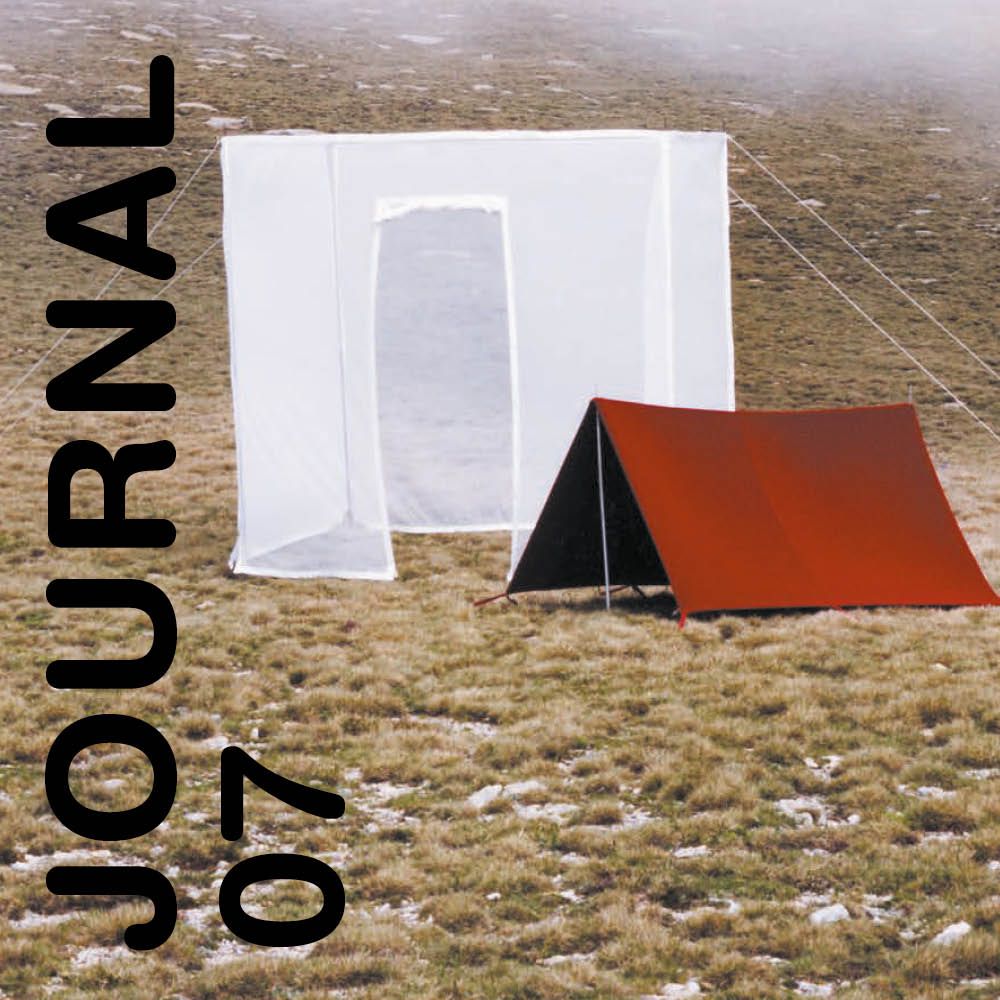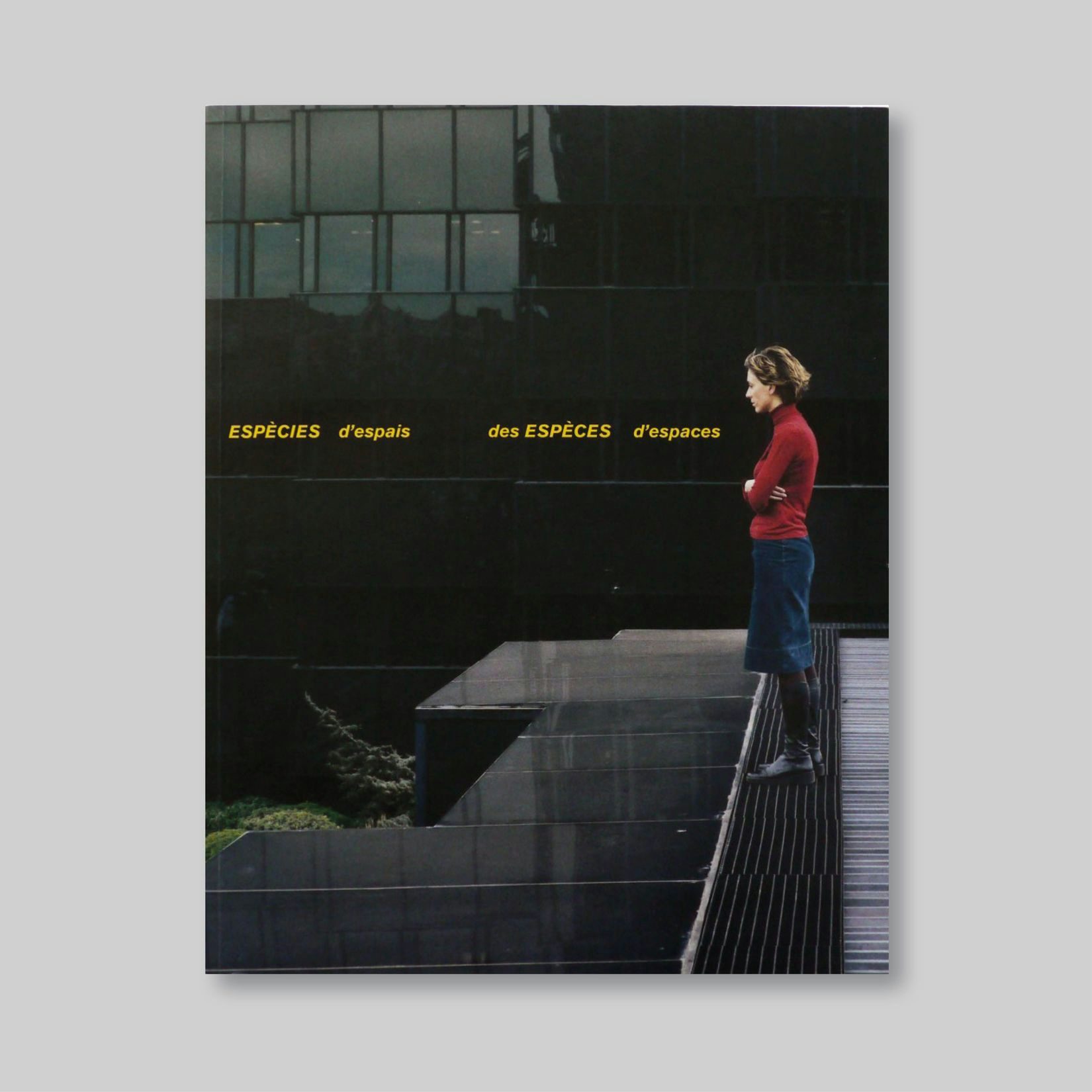
Species of Spaces
2003.06.19 - 08.17
CHANTAL GRANDE AND MARIE-JOSÉE JEAN
I put up a picture on a wall. Then I forget there is a wall. . . . I no longer know that in my apartment there are walls, or that if there weren’t any walls, there would be no apartment. The wall is no longer what delimits and defines the place where I live, that which separates it from the other places where other people live, it is nothing more than a support for the picture. But I also forget the picture, I no longer look at it, I no longer know how to look at it. I have put the picture on the wall so as to forget that there was a wall, but in forgetting the wall, I forget the picture, too. – Georges Perec
Each of us is limited by the space in which we live. Its shapes, brought into being by walls, houses, buildings, streets, cities, and suburbs, order our movements and situate us in a precise setting. Space is thus made up of divisions, whether tangible or virtual, which also create boundaries between indoors and outdoors, public and private, and the urban and nature. Now, most often these divisions have become invisible to our sight: we no longer know how to look at the space they create, Georges Perec insisted in a book that has since become famous and from which this exhibition has borrowed its eloquent title.1 In fact, only rarely do we glimpse its lines of demarcation, meeting points, dimensions or manifold itineraries. In order to do so, we need to « continually to be changing, either the wall or the picture, » Perec continues, or « to be forever putting other pictures up on the walls, or else constantly moving the picture from one wall to another. »2 Put another way, we must defy this transparency brought on by habit and see space differently.

Modern-day culture has made quite a lot out of the notion of « transparency, » a transparency which makes the structure of things visible or one which makes it possible for reality in its entirety to become apparent. In the event, modern architecture has privileged the use of transparent materials in its concern to negate or, rather, to neutralise the wall as a suture between inside and out. We don’t look at the building, Dan Graham has remarked, we look through it.3 This American artist has become assiduously interested in the problem of the fluidity between the interior and exterior and has revealed the utopian and essentially functional and material language of many modern architects’ work. His essays and works of art have made it possible to cast a different sort of gaze on transparent buildings, making us realise that, most often, their glass surfaces reflect an infinite play of images in which the landscape and the city’s residents are reproduced. Its glass walls thus become veritable screens upon which a continuous and live-action film of urban life is projected.
The task of exposing space, of bringing it to light – the task, put another way, of analysing the visibility of the material objects around us – is the common thread running through this exhibition. Following Dan Graham, we detect, in the works and visual experiments of the artists presented here, a desire to make us see the space in which we live and move, through their discovery of new relationships within that space or in the way they cast a critical gaze on it. The relationship between an individual and his or her habitat has been the object of numerous studies, it has been considered in its manifold aspects – documentary, anthropological, social, aesthetic, etc. – and yet it renews itself in cyclical fashion, following the social and cultural changes that mark the transformation of our relationships with spaces.
Space surrounds us, it spreads out all around us, but it is also engraved upon us and, subtly, it acts like a vector in our relationship to the world. It attaches itself to us through the gaze, first of all, which connects us to space through a visual thread. Imagine that a series of dotted lines were traced upon the ground, following your movements in the course of a day. This plotting out would reveal your determination to go to a precise place. Now imagine that this dotted line were superimposed on those of the thousands of others who travelled a similar path, and you will create all the encounters that could have occurred if you had chosen a different path or if time had been synchronised differently. The way we look at space, which determines our movements, is also the space we are, the space we become. To look at space, to retrace it: this is the project and the ambition of the species of spaces exhibited in this itinerary.
The exhibition will also be presented at the Contemporary art center Tinglado 2, Tarragone, Spain, from October 17 to December 14, 2003. In association with the COPEC, Culture de Catalogne and the Town Hall of Tarragone.
